Table of Contents
Energy Efficiency And Light Bulbs
Light bulbs are one of the easiest areas for homeowners to help in energy conservation. It is so simple to change a light bulb. If you aren’t running LED bulbs yet, like these bright white bulbs, you need to consider changing over. I can see your eyes rolling now. You probably tried LEDs when they first came out, when they made your room look like an operating theater and hurt your eyes. You can get LED bulbs now that look exactly like a regular incandescent bulb but they use 10% of the energy. Check out more information on LED bulbs here.Natural Lighting
 The best advice for saving energy in your home is to use the natural light that you can get for free.
Open your curtains, or use sheer curtains, like these beautiful soft gray ones I just bought, and let the light in during the day rather than turning on the lamps in your living room.
Not only does this help with energy conservation but it also tends to make you feel happier as well. Humans are inclined to natural light by nature.
That’s why they make natural light producing fixtures for people who get depressed. I haven’t used one of these myself but I know several customers that have found these lights to be helpful.
If you need even more natural light, consider putting in a skylight or a solar tube. They let light come through your roof and spill into your living area even more. Not only that, but they aren’t as difficult to put in as you may imagine.
Basically, they install just like installing a window except that it’s in a roof instead of a wall. People are concerned that they will leak, but Velux makes a stunningly good skylight that, when they’re properly installed with the correct flashing kit, have a no leak guarantee.
They have great customer service as well if you do end up having any issues. But I’ve never had a customer develop a leak with this skylight when it was installed correctly with the flashing kit.
The best advice for saving energy in your home is to use the natural light that you can get for free.
Open your curtains, or use sheer curtains, like these beautiful soft gray ones I just bought, and let the light in during the day rather than turning on the lamps in your living room.
Not only does this help with energy conservation but it also tends to make you feel happier as well. Humans are inclined to natural light by nature.
That’s why they make natural light producing fixtures for people who get depressed. I haven’t used one of these myself but I know several customers that have found these lights to be helpful.
If you need even more natural light, consider putting in a skylight or a solar tube. They let light come through your roof and spill into your living area even more. Not only that, but they aren’t as difficult to put in as you may imagine.
Basically, they install just like installing a window except that it’s in a roof instead of a wall. People are concerned that they will leak, but Velux makes a stunningly good skylight that, when they’re properly installed with the correct flashing kit, have a no leak guarantee.
They have great customer service as well if you do end up having any issues. But I’ve never had a customer develop a leak with this skylight when it was installed correctly with the flashing kit.
Fluorescent Lighting
Fluorescent lighting was the first energy efficient option for lighting in commercial and residential buildings. They work by creating a tube with an ion inside which, when excited by energy passing through, creates light. Unlike their predecessors, the fluorescent light bulbs don’t burn out when the filament is broken. Instead, they slowly die over time. Ironically, fluorescent light bulbs take a few hundred hours of use in order to run at full brightness as well. Fluorescent light bulbs were also the first to offer different light colors, like I go over in this article on the science of light. Basically, you can have a warm light color, like a standard incandescent bulb, or a cool light color, like the first LED bulbs or natural light. That’s pretty cool and it offers you the ability to customize your lighting atmosphere. Some people don’t feel like they like the light that fluorescent bulbs produce, feeling that they produce a headache. I think part of this is mental because they’ve heard other people have issues. However, even I notice a difference in the light color. They produce a…watery…light that even I don’t tend to like very much. My eyes see even the warm light colors as somewhat unpleasant. But everybody’s eyes are different so that’s something to remember.LED Light Bulbs
LED light bulbs are what fluorescent bulbs wish they were. They are even more energy efficient than fluorescent bulbs and they produce better light. LED bulbs basically have a small computer chip on their base that produces light when a current is passed through it. Here’s a fun fact: you don’t actually need the top plastic part of an LED bulb. The only purpose the top serves is to make the bulb look like a regular bulb. These bulbs produce light at any desired color temperature now. You can select anything from a warm light to a cool light and everything in between. For the most part, you can get all the color temperatures in most wattage equivalents but the most options come at the 60 watt equivalent. The light produced is thick and beautiful, unlike the fluorescent light produced. I haven’t heard of anybody that suffers from headaches due to an LED bulb but if you have trouble with one, try a different color temperature before you give them up for good.Smart Light Bulbs
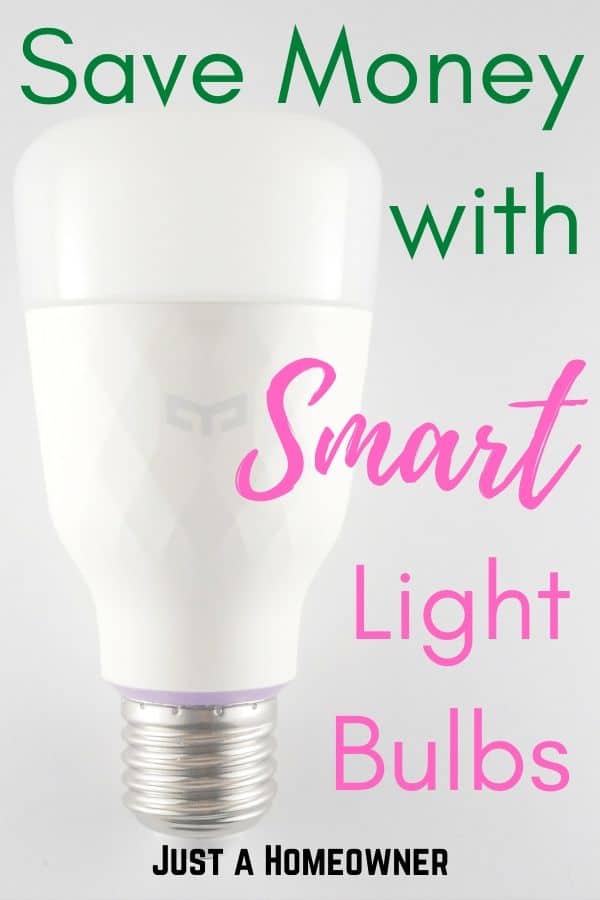 There are numerous smart light bulbs on the market now. These bulbs are exclusively LED and they allow you to do any number of different things. The most common is probably the Philips Hue light bulbs. These light bulbs usually connect to your phone or a whole house hub, that you can buy with them in a kit, and allow you to control your lighting more precisely. You can change the color of the light, not only allowing for warm to cool but also blue, yellow, and red colors. These bulbs frequently let you control the brightness as well so that you basically have your whole home on dimmers. Check out the in depth information on the Philips Hue here.
While these systems are expensive, people do really like them. Especially for young families, where each person has their own desired living habitat, these bulbs help you keep the peace. For older people, it’s nice in the morning to have the light bulbs dimmed but to turn up the brightness when you’re cooking for example.
Since these bulbs are LED, they save energy just based on their type. However, when it comes to energy efficiency, these bulbs also tend to make it easier to turn off your lights and save energy that way too. Many people set these up on timing systems to turn the lights on and off at a specific time.
There are numerous smart light bulbs on the market now. These bulbs are exclusively LED and they allow you to do any number of different things. The most common is probably the Philips Hue light bulbs. These light bulbs usually connect to your phone or a whole house hub, that you can buy with them in a kit, and allow you to control your lighting more precisely. You can change the color of the light, not only allowing for warm to cool but also blue, yellow, and red colors. These bulbs frequently let you control the brightness as well so that you basically have your whole home on dimmers. Check out the in depth information on the Philips Hue here.
While these systems are expensive, people do really like them. Especially for young families, where each person has their own desired living habitat, these bulbs help you keep the peace. For older people, it’s nice in the morning to have the light bulbs dimmed but to turn up the brightness when you’re cooking for example.
Since these bulbs are LED, they save energy just based on their type. However, when it comes to energy efficiency, these bulbs also tend to make it easier to turn off your lights and save energy that way too. Many people set these up on timing systems to turn the lights on and off at a specific time.
Light Sensors and Timers
 Speaking of timers, you can set up any circuit of lights to operate on a timer. All you need is a light switch that operates on a timer and you can preset what times you want the lights to be off.
If you work every weekday from 9-5 then it can be pre-programmed to have the lights off at that time. You can also set up your lights in the kids’ rooms to be off at night if they have a habit of going to sleep with the lights on.
More often, people like to set their lights up on either an occupancy sensor or a motion sensor. These sensors increase energy efficiency by automatically turning the lights on when they sense a person in the room and turning the lights off when they haven’t seen movement in a while.
These are my preferred method of setting up lights to run with maximum energy efficiency since they don’t rely on a set schedule for the homeowner.
Speaking of timers, you can set up any circuit of lights to operate on a timer. All you need is a light switch that operates on a timer and you can preset what times you want the lights to be off.
If you work every weekday from 9-5 then it can be pre-programmed to have the lights off at that time. You can also set up your lights in the kids’ rooms to be off at night if they have a habit of going to sleep with the lights on.
More often, people like to set their lights up on either an occupancy sensor or a motion sensor. These sensors increase energy efficiency by automatically turning the lights on when they sense a person in the room and turning the lights off when they haven’t seen movement in a while.
These are my preferred method of setting up lights to run with maximum energy efficiency since they don’t rely on a set schedule for the homeowner.
Energy Efficiency With Windows And Doors
Windows and doors are a problem when it comes to whole house energy efficiency. They basically put a giant hole in the wall where you don’t have very much insulation built up. Because of that, you need to make sure that you purchase these products and install them correctly to maintain good energy efficiency.Windows
Basic Anatomy Of Energy Efficient Windows
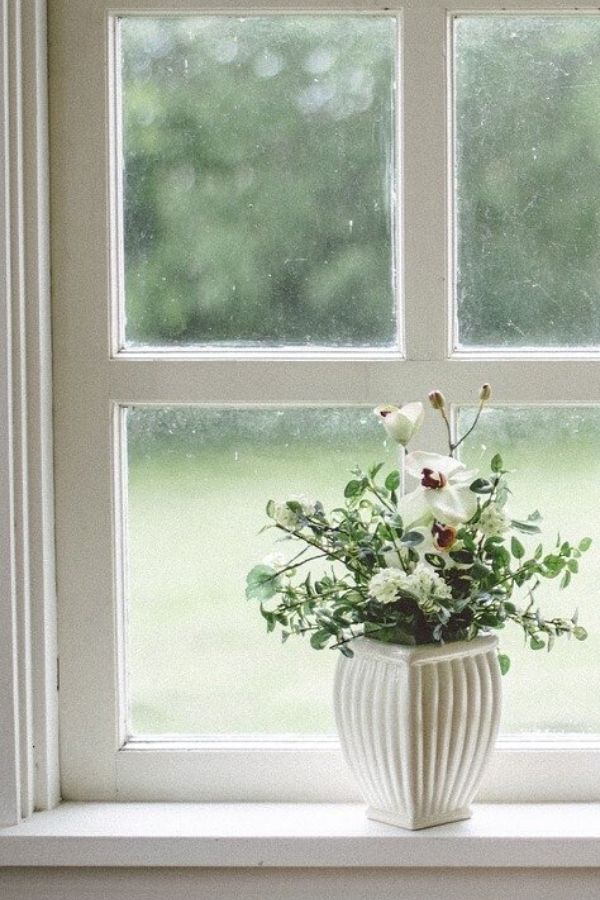 At their most basic, you need to know how to spot a good window. For energy efficiency, the more panes of glass, the better.
Some rebates now require that windows are so energy efficient that you need three panes of glass to meet the standard. In general though, a double pane window is sufficient.
There are also different types of glass coatings that provide more or less efficiency. Low-E is a film that can be applied to the window in order to increase energy efficiency.
Read more on low-E coatings at HomeAdvisor.com. The thicker the low-E coating, the more efficient the window. The thicker the coating is, the more tint it will put on the window but you really only notice the tint if it is next to a window without the low-E coating.
At their most basic, you need to know how to spot a good window. For energy efficiency, the more panes of glass, the better.
Some rebates now require that windows are so energy efficient that you need three panes of glass to meet the standard. In general though, a double pane window is sufficient.
There are also different types of glass coatings that provide more or less efficiency. Low-E is a film that can be applied to the window in order to increase energy efficiency.
Read more on low-E coatings at HomeAdvisor.com. The thicker the low-E coating, the more efficient the window. The thicker the coating is, the more tint it will put on the window but you really only notice the tint if it is next to a window without the low-E coating.
Vinyl, Composite, Or Wood, Oh My!
When you go window shopping, you’re going to see windows made out of many different materials. For the most part, you won’t see the old aluminum windows anymore since they didn’t tend to be very efficient. The majority of what is stocked in store will be white, vinyl windows, like Jeld-wen. These windows are a great starting point for most homeowners since they are energy efficient and fairly inexpensive. Composite windows, from companies like Anderson 100 series windows, are a great alternative to vinyl. Unlike vinyl, they are constructed more cleanly, without all the corner welds and with style lines in the frames. I prefer these windows because those small details make your home look a little more spiffy. These windows probably aren’t going to be that much more energy efficient since they are so similar to vinyl. Wood windows are one of the best options for energy efficiency. They offer a classic look and they offer high insulation value. The only problem with wood windows is that the wood tends to rot outside. However, most of the window companies, like the Anderson 400 series or Marvin windows, have started to make the traditional wood windows and clad the outside in a tougher material like aluminum or vinyl. This gives you all the great benefits of wood windows but they last longer.Doors
 Everybody thinks of energy efficiency of windows, maybe because they actually look like a hole in the wall, but very few people apply the same care to choosing a door.
The door can be just as important as the windows if you want an energy efficient home. Generally speaking, the less glass in the door, the more efficient it will be. So a door with a full length glass won’t be as energy efficient as a door with a 1/3 length glass.
You should definitely check out the article on exterior door types for in depth information, but I’ll run you through the basics regarding energy efficiency.
Everybody thinks of energy efficiency of windows, maybe because they actually look like a hole in the wall, but very few people apply the same care to choosing a door.
The door can be just as important as the windows if you want an energy efficient home. Generally speaking, the less glass in the door, the more efficient it will be. So a door with a full length glass won’t be as energy efficient as a door with a 1/3 length glass.
You should definitely check out the article on exterior door types for in depth information, but I’ll run you through the basics regarding energy efficiency.
Selecting Energy Efficient Door Material
I was shocked today when I helped a customer trying to find an energy efficient door. He looked at a Thermatru fiberglass door compared to a Simpson wood door. The fiberglass door, with a half length window, had a U-factor of about .26 while the wood door had a U-factor of .45 for the same door. I explain U-factor just below so don’t get too far ahead. What that means though is that the fiberglass door is almost twice as efficient as the wood door! I never would have thought that would happen! I’ve always been told that wood doors are more efficient and that’s always what I’ve told my customers. I’m glad this customer had me look. So, go with a fiberglass door and keep the glass small if you want the most energy efficient door.Reading Energy Efficiency Labels On Windows And Doors
Now, to explain how to read energy efficiency labels, because it may as well be written in Greek for most of us. This can get incredibly scientific but I’ll keep it to the basics. There are two things that are important for energy efficiency. If you want a super science-based explanation, check out this article from stanekwindows.com.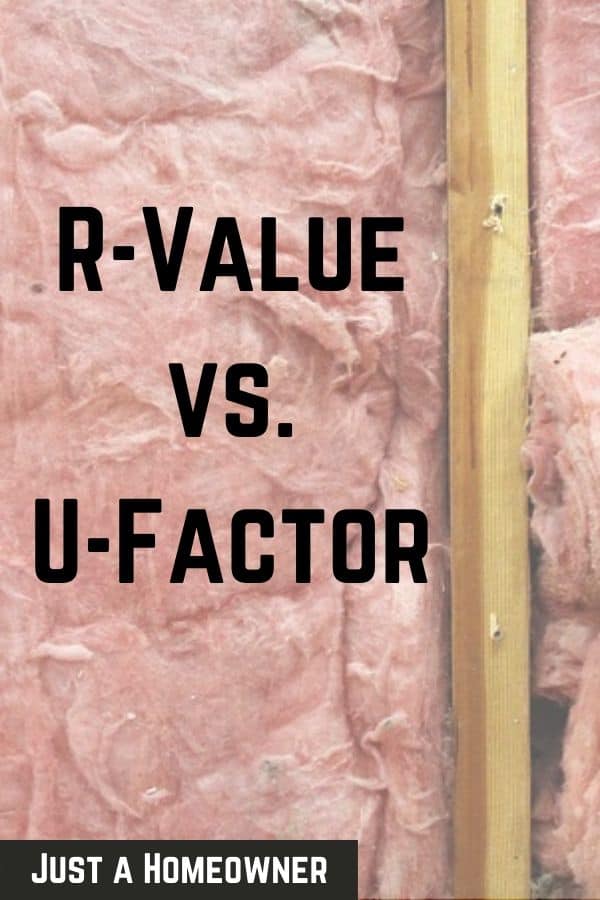
R-Value
There is the R-value, which people are a bit more familiar with. This measures how insulative a particular material is, which is why it is important in selecting insulation for instance. The higher the R-value, the more the material insulates. It does not take into account how that material is installed. Because of this, while it may be listed for doors and windows, it isn’t as important.U-Factor
The important measurement on a door or window is the U-factor. This measures how much heat passes through a specific assembly of materials, such as a properly installed window glass and frame, over a certain time. To learn how to properly install a window check out How to Install a Window. The lower the U-factor, the more energy efficient the product. So, to travel back the door example above is a huge difference in energy efficiency!Energy Efficiency And Appliances
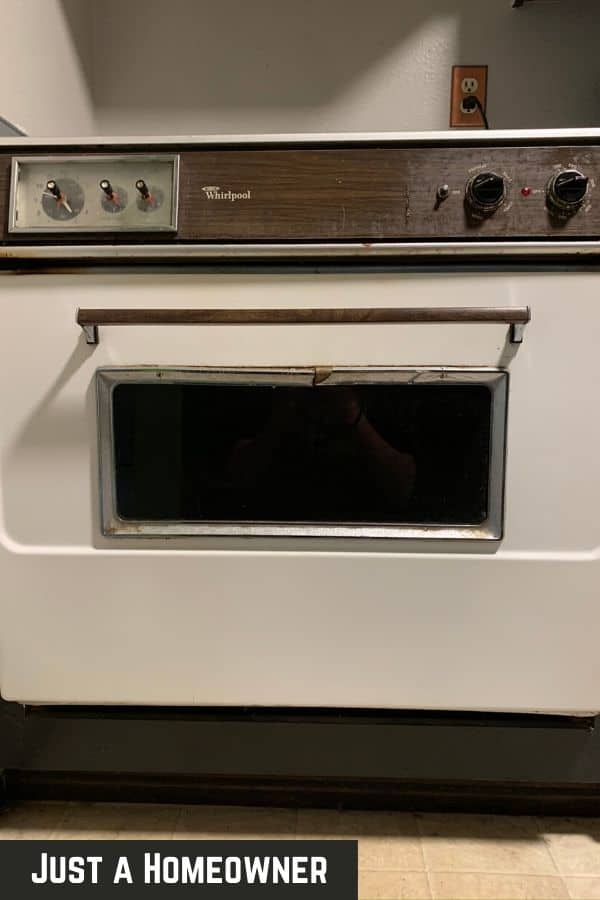 Appliances account for a large portion of a home’s energy usage so choose them wisely from a good dealer. It makes sense really. The fridge has to run constantly to keep a consistent cold temperature.
The water heater runs constantly as well. Replacing old appliances with modern, efficient models results in huge amounts of energy conservation. For instance, my oven is from the 1970s.
Yes, you read that correctly. My oven is roughly 40 years old. I could save a ton of energy and money by replacing it with a new oven.
If your appliances are more than 10 years old, I suggest that you consider replacing them rather than fixing them if they break. However, this isn’t completely necessary.
At around 20 years old, it becomes much more reasonable to switch out an old appliance for a newer one. At that point, you will see the reduction in energy, and therefore the reduction in your energy bills.
Appliances account for a large portion of a home’s energy usage so choose them wisely from a good dealer. It makes sense really. The fridge has to run constantly to keep a consistent cold temperature.
The water heater runs constantly as well. Replacing old appliances with modern, efficient models results in huge amounts of energy conservation. For instance, my oven is from the 1970s.
Yes, you read that correctly. My oven is roughly 40 years old. I could save a ton of energy and money by replacing it with a new oven.
If your appliances are more than 10 years old, I suggest that you consider replacing them rather than fixing them if they break. However, this isn’t completely necessary.
At around 20 years old, it becomes much more reasonable to switch out an old appliance for a newer one. At that point, you will see the reduction in energy, and therefore the reduction in your energy bills.
Refrigerator
There are some general good practices regarding refrigerators when you are buying one for energy efficiency. For starters, make sure that you are buying a refrigerator that is the correct size for your needs and Bestbuy has a great article to help you choose. A fridge that is completely empty or one that is completely full will not run with its best efficiency. Keep your refrigerator from any heat sources as well. For example, a fridge in a hot garage or too close to a stove will not run as efficiently. On the matter of space, you need to make sure that the refrigerator has space for air to circulate as well. You don’t want your refrigerator to be stuck inside a cabinet or it runs extra in order to account for the lack of air flow.Water Heater
Okay, let’s all calm down a second and prepare to be flexible. Now that you are ready I have to tell you something. Standard tank water heaters are incredibly inefficient!! You are keeping 40 or more gallons of water super heated so that for a small portion of the day you have a shower or a load of laundry at your chosen temperature. If you have to use a standard water heater, at least cover it with a water heater blanket to make it slightly more efficient. Instead look into buying a tankless water heater. Just like it sounds, these water heaters don’t have the big tank of water kept warm for only a small portion of the day. Instead, tankless water heaters heat water instantly on demand. It only heats the water you use so you have a ton of energy efficiency and you save a ton of money.Clothes Dryers
Your dryer is a great place to focus on energy efficiency. It’s one of the times when you should pay for some of the cool features that usually are just bonuses. For instance, look for dryers with moisture sensors that will stop prematurely if they sense the load is already dry. You can also look for dryers with steam functions to quickly release wrinkles in clothes. The trick if you aren’t ready to replace your dryer is to run it efficiently. Run your dryer with a moderate size load that allows your load to dry completely without wasting energy by running past dry. You can also put dryer balls, wool felted balls, to help your loads dry quicker and save energy as well. You could also line dry your items with a retractable clothes line that gets out of the way when you aren’t using it.Energy Efficiency With Heating And Cooling
 Heating and cooling are one of the huge energy sinks of a house. Unfortunately, it’s one of the few areas that people tend to really care about having perfect.
One person in the home wants it cool, the other person has three layers of clothes on and complains they can’t feel their toes. So, if everybody can’t agree, you may as well be energy efficient.
A quick tip is to keep your home as warm in the summer and as cool in the winter as you can stand. You could install a programmable thermostat, like I walk you through in this article, to maintain your living space at a good temperature each day.
Heating and cooling are one of the huge energy sinks of a house. Unfortunately, it’s one of the few areas that people tend to really care about having perfect.
One person in the home wants it cool, the other person has three layers of clothes on and complains they can’t feel their toes. So, if everybody can’t agree, you may as well be energy efficient.
A quick tip is to keep your home as warm in the summer and as cool in the winter as you can stand. You could install a programmable thermostat, like I walk you through in this article, to maintain your living space at a good temperature each day.
Cooling
Ceiling Fans
Ceiling fans help to circulate the air around a room, whether it’s cold or hot. I thought I would put it under cooling since that’s the function most people are familiar with. However, running a fan will help to push air around and room and make the whole room more similar in temperature, like a convection oven. Ceiling fans don’t take a ton of energy to run fortunately. They function as a cooling device mainly by wind chill. So they cool a room’s occupant by the actual blowing air more than anything. If the room is unoccupied, don’t run the fan!Air Conditioning
I have a hatred for air conditioning. It feels good at first but then it makes you too cold and you end up running the heat to warm up. But that’s beside the point. There really isn’t an air conditioner that is better for energy efficiency. They are all terrible at it compared to the benefits that you get. To run your air conditioning at its most efficient, just keep the temperature as high as you feel comfortable. If you turn your air conditioning up and then put on more clothes, it defeats the purpose. Make sure that if you are going to be gone for a long time, you turn your air conditioning off because you’ll be cooling a house with nobody in it. You can always look at installing a smart thermostat to turn your cooling system off automatically during unoccupied times of day.Blinds/Curtains
 You may wonder why blinds are in an article about energy efficiency. How could a blind or a curtain not be efficient? It isn’t that the blinds can run efficiently.
Instead it’s to make sure that you consider window treatments as a crucial factor in your energy efficiency plan!
Blinds keep out sunlight which helps keep your home cooler overall. They also provide some level of thermal protection by keeping an air barrier on the window surface.
If you add curtains to that, it helps even more. Thick, dense curtains of course provide more thermal insulation and block the sunlight more.
But adding a sheer curtain behind the thick curtain, like the set I just bought, lets you open the thicker curtain to allow a little light through so that you don’t have to run the lights. All you need is a double bar curtain rod like the one here that’s easy to set up.
You may wonder why blinds are in an article about energy efficiency. How could a blind or a curtain not be efficient? It isn’t that the blinds can run efficiently.
Instead it’s to make sure that you consider window treatments as a crucial factor in your energy efficiency plan!
Blinds keep out sunlight which helps keep your home cooler overall. They also provide some level of thermal protection by keeping an air barrier on the window surface.
If you add curtains to that, it helps even more. Thick, dense curtains of course provide more thermal insulation and block the sunlight more.
But adding a sheer curtain behind the thick curtain, like the set I just bought, lets you open the thicker curtain to allow a little light through so that you don’t have to run the lights. All you need is a double bar curtain rod like the one here that’s easy to set up.
Heating
Electric: Baseboard Heat and Ceiling Heat
Electric heating is one of the easiest types of heating system to install and incredibly common in the United States. These systems come in both baseboard and ceiling varieties. The nice thing about these systems is that you can shut off different rooms and not heat them if they aren’t in use, which does save some energy. The baseboard heaters, lie along the baseboard of your room and heat the room from the bottom up. These heaters keep you from running furniture too close to the walls. The systems are incredibly easy to set up though and provide reasonably good heat. They are slightly more energy efficient but still not great for efficiency. Ceiling heat uses electrical resistance in wires laid above the ceiling sheetrock to heat the room from the top down. These are one of the most inefficient systems, since heat rises, and if energy efficiency is important to you, you should look at replacing them.Forced Air Furnace
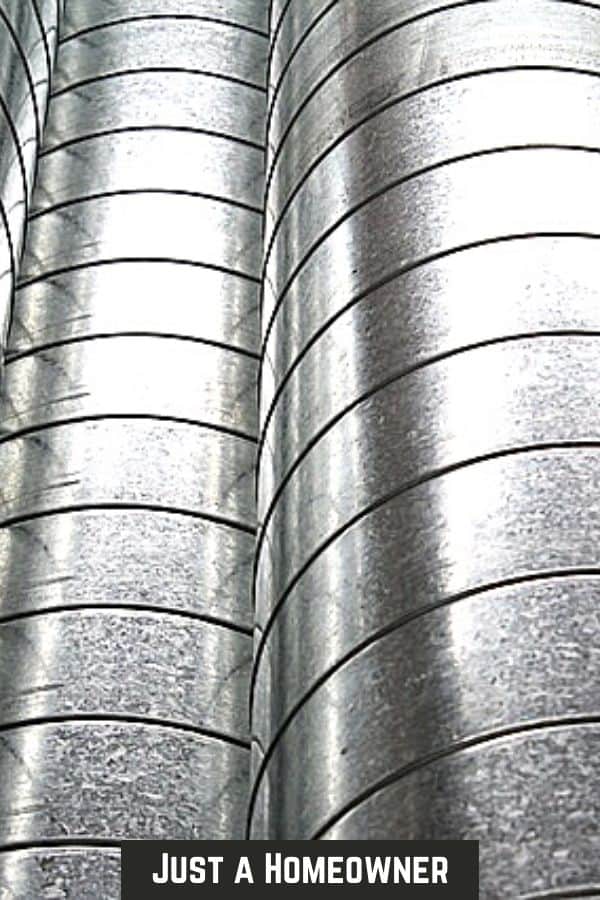 Forced air is another common method of heating a building. The home will have ductwork running throughout the basement or ceiling that air is pushed through.
These systems are more efficient than electric systems, for the most part, but they still have a few issues.
First, there is the potential for massive heat loss through the ductwork if it isn’t insulated properly. If it is properly insulated, you will be much more energy efficient.
Second, these systems have filters that the air is pushed through first and, if those filters are clogged, the furnace has to run extra hard.
Make sure to change your furnace filters a few times a year to keep these systems running efficiently.
Forced air is another common method of heating a building. The home will have ductwork running throughout the basement or ceiling that air is pushed through.
These systems are more efficient than electric systems, for the most part, but they still have a few issues.
First, there is the potential for massive heat loss through the ductwork if it isn’t insulated properly. If it is properly insulated, you will be much more energy efficient.
Second, these systems have filters that the air is pushed through first and, if those filters are clogged, the furnace has to run extra hard.
Make sure to change your furnace filters a few times a year to keep these systems running efficiently.
Heat Pumps
Heat pumps are deceptive things. They can’t be classified as heating or cooling because they do heating, cooling, dehumidify, and act as air purifiers. These systems now come in a ductless variety, which I just put in my home, and they are excellent examples of energy efficiency. Let me give you an example in my own home. We installed a Mitsubishi ductless heat pump about a year ago. It cost $5,000 fully installed, which definitely hurt when I wrote that check. However, we now keep our home at a constant comfortable temperature year round and our energy bill hasn’t increased at all. We never used to have air conditioning and we used to run our ceiling heat as little as possible. We were constantly too cold or too hot. I have never regretted spending that money. It was the best thing I ever bought and I 1000% recommend it to anybody.Energy Efficiency And Vampire Energy
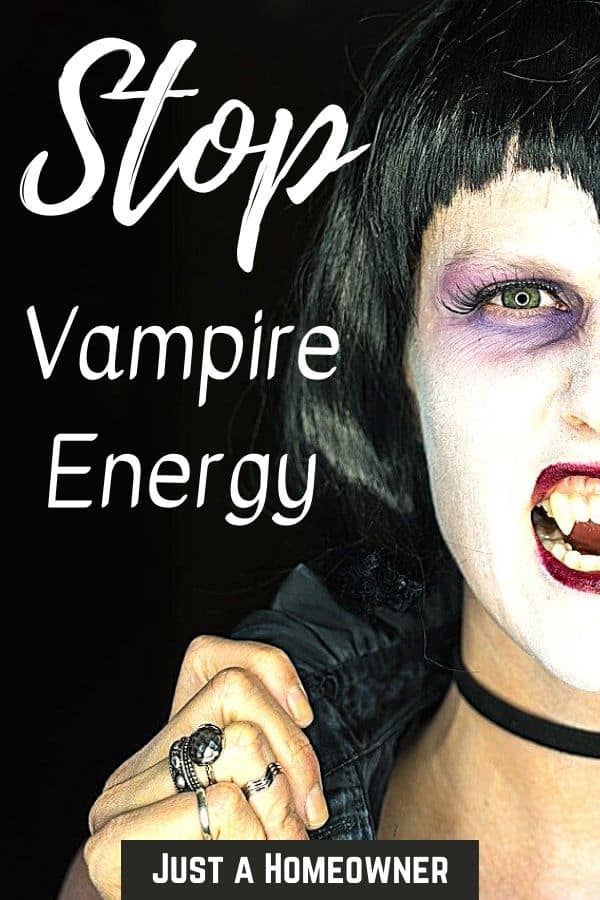 At this point, how can there be anything else to discuss about energy efficiency? But there is one more incredibly important topic to discuss.
I was shocked to learn that there was a thing called “vampire energy.” The basic definition of vampire energy is the energy that is used by an appliance, even when you aren’t using it.
For example, the clock that took you two months to figure out how to set on the microwave has LED lights that use energy all night long even though the microwave isn’t being used.
Do you even look at that clock? Of course, you could unplug the appliance anytime it isn’t in use. There are several smart plugs that you can use to help prevent vampire energy from sucking you dry.
At this point, how can there be anything else to discuss about energy efficiency? But there is one more incredibly important topic to discuss.
I was shocked to learn that there was a thing called “vampire energy.” The basic definition of vampire energy is the energy that is used by an appliance, even when you aren’t using it.
For example, the clock that took you two months to figure out how to set on the microwave has LED lights that use energy all night long even though the microwave isn’t being used.
Do you even look at that clock? Of course, you could unplug the appliance anytime it isn’t in use. There are several smart plugs that you can use to help prevent vampire energy from sucking you dry.
Examples of Vampire Energy
- Microwave clock
- Coffee pot
- Cell phone charger
- Television
- Laptop charger
- Cordless drill charger
- Video game console
- Router
